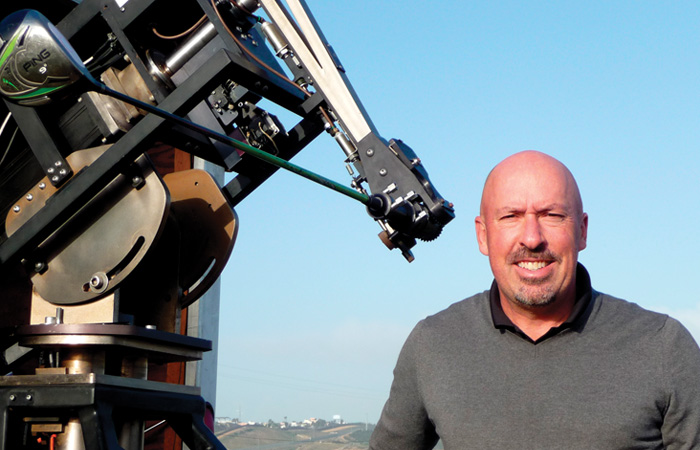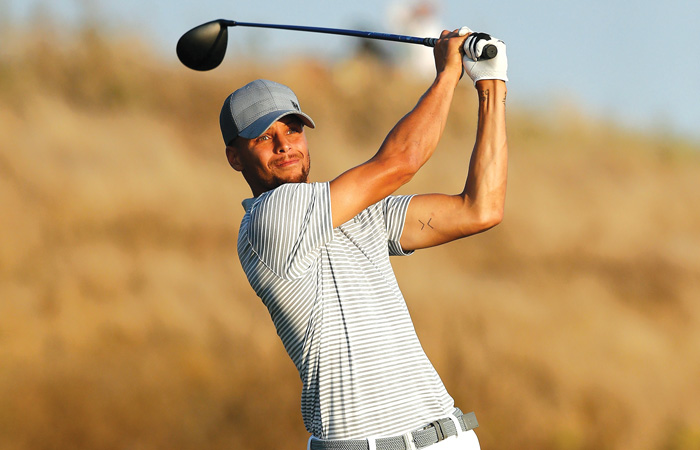When Tiger Woods had his sixth spinal surgery in 10 years, naturally it made headlines. It was widely reported that the surgeon who performed the surgery was Dr. Sheeraz Qureshi (MD, MBA), a spinal surgeon and Co-Chief of Spine Service at The Hospital for Special Surgery, a spine service that is internationally recognized as a leader in pioneering new ways to care for people with spinal conditions.
To better understand golfers and lo-back pain and the options they might have to reduce or eliminate their pain, it was therefore very useful to get Dr. Qureshi’s perspective on how a leading surgeon deals with patients, especially golfers, who have back issues (be it in the cervical, thoracic or lumbar regions).

Dr. Qureshi is a 48-year-old with almost two decades of spinal surgery experience. A New Jersey native, both his parents worked in a hospital setting and had a great deal of respect for healthcare, making it a no-brainer for the young Sheeraz to get into medicine. Why surgery? To him it appeared to combine the cerebral part of medicine with a certain athlete-like ability – that of hand-eye-coordination. Moreover, it is an art as well as a science. The creativity comes from formulating the specific treatment plan for a patient, based on their health situation, as well as their expectations and what they enjoy doing.
Is he a surgeon specializing in golf athletes and did that happen by design? He, personally, played baseball growing up, along with some basketball, and only came into golf in his fourth and fifth decades. “I play it very badly,” he said modestly, while claiming to be a mere weekend warrior. As to who his patients are? He would guess that 80 percent of them play golf at some level, and that is probably for two reasons. Firstly, patients mainly come to him through word-of-mouth referrals, probably a result of his taking good care of them and doing the job well. Secondly because he specializes in minimally invasive and robotic surgeries with the expectation of faster recovery times, and most of his patients are those who are athletic and in sports, not merely those who try to “stay active.”
So, as a much-in-demand spinal surgeon, what is Dr Qureshi’s modus operandi? He has kept very detailed records of all his patients over the years – there are currently 5,000 in his database – beyond what most people might. He has recorded not merely their histories, but also their radiographic results, his interventions, and follow-up data for as long as possible, even up to four years post-surgery. He hopes one day to be able to use AI to input patient information and get suggestions for the best intervention to perform.

In the meantime, Dr. Qureshi says, surgery is only warranted if one of three conditions exists: there is neurological impingement, there is instability in the spine (as a result of conditions like arthritis or a fracture), or there is a problem with spinal alignment. He would certainly avoid a fusion unless the above conditions existed, even though he has research that shows that as long as the procedure is minimally invasive, a fusion and a decompression have similar outcomes. When asked whether fused spines (which Tiger has been reported to have had in the past) can cause back spasms, he said no. However, he added that top athletes are so in tune with their bodies and use their muscles in such specific ways that they might feel aggravated in certain areas.
Does fusion reduce range of motion? Not typically if it’s a smaller one or two-level fusion. In fact, as a fusion is undertaken only when some misalignment or deterioration of tissue exists, typically some reconstruction is also involved, thus resulting in a promising outcome. If the fusion is at seven to eight levels, as with a scoliosis condition, it might reduce range of motion. While bending is typically not an issue, twisting or torsion is, such as that seen in golf.
What might be the recovery period after a spinal procedure, even a minimally invasive one? While it depends, to a great extent, on the patient’s condition and the team helping with recovery, very broadly he would say eight weeks, which, under some circumstances could become as little as three – it all depends.
What movements should golfers avoid to reduce the risk for future injuries? Twisting has a significant impact on stress at the L4-L5 and the L5-S1 lumbar levels, says Dr. Qureshi. If they have damage to lower lumbar discs and pain from that region, they might increase flexibility which they probably have lost, especially with respect to rotation. They could also do core stabilization, thoracic rotation, and perhaps change something around that. And, naturally, warm-up before playing.
That is some wonderful information and advice from someone who should know. To complete the picture for a golfer with low back pain, from the perspective of a biomechanist and golf swing coach – you might also consider a switch to a swing which reduces forward bend, side bend and rotation ranges of motion at the lumbar/pelvic level, as all of them have been shown, in the golf swing literature, to cause low-back pain. Why risk recurrence of lumbar disc herniation that can take place in about six percent of patients, especially in those who do “heavy work,” such as make lots of golf swings? (Wang et al. 2022).
And as for Tiger? May it stop at six – your fans await!